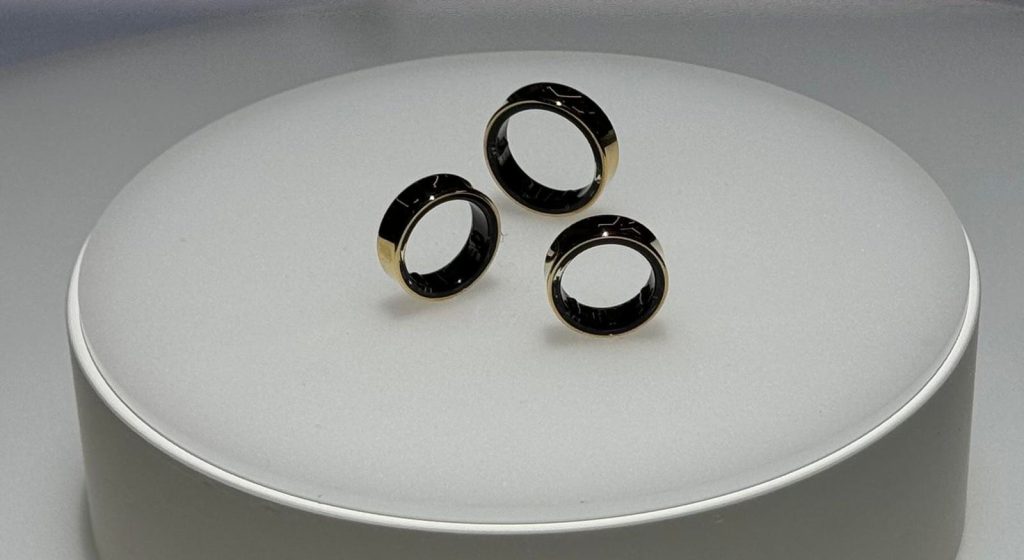Samsung teased its first finger-borne wearable, the Galaxy Ring, in January. Now, more details are emerging of what’s coming. Some of it, like the battery life, is impressive.
March 4 update below. This post was first published on March 3, 2024.
tried on the Ring in a meeting with Dr Hon Pak in January. Now, the reliably excellent Katie Collins from CNet saw Dr Pak, Samsung’s vice president and head of the digital health team and has picked up some juicy tidbits. Things could still change—the Ring is thought to be released in July—but there are plenty of new details here.
Three Colors
Although Samsung said the design and color choices could change before release, Katie saw the same three colors I did: gold, silver and ceramic black. When I tried the Ring, I found the gold rather bright, but the black was pleasingly understated.
The concave channel running round the ring is also still there—and I suspect will be the trademark look when it’s released later this year.
Sizes And Weights
The Ring comes in nine sizes, it was previously reported, numbered from 5 to 13, to use traditional ring sizes, but will be marked from Small to Extra-Large. Collins has now told us the weights of these rings, which will range from 2.3 grams to 2.9 grams. Even the largest of these is significantly lighter than the Oura Ring. I’d add that the Oura Ring is far from heavy, at between 4 grams and 6 grams, and can be worn unobtrusively all day and night. It’s light enough that it’s easy to forget it’s there so the same will surely be true of Samsung’s offering. Again, these specs could change.
Which Finger?
This is interesting: Collins says the Ring will “work equally well no matter which finger it’s worn on.” Oura, however, specifies that for best results you should wear the Oura Ring on either the index or middle finger.
Battery Life
The Ring’s battery life, for the prototypes at least, was also revealed. And it’s pretty impressive. Collins says, “The smallest ring had the smallest battery with a 14.5-mAh capacity. The size of the battery increased incrementally with the size of the ring, up to the biggest model, which had a capacity of 21.5 mAh. We can’t draw any conclusions at this stage about what this will mean for battery life in the finished product, but it’s fair to guess that there will be a slight difference in how often you need to charge the Galaxy Ring between the smallest and biggest sizes.”
In a previous report, Samsung has said that the battery life will be between five and nine days. That’s better than rings from UltraHuman and RingConn, and potentially more than Oura, which claims a one-week battery life.
Health Metrics
Dr Pak told Collins that the Galaxy Ring “will be able track your sleep using four different metrics: heart rate, respiratory rate, night movement and sleep latency.” It will also work for monthly cycle tracking.
Ring And Watch
Finally, Dr Pak said the Galaxy Ring and Galaxy Watch can work together, and will deliver higher quality data this way. “We know that, for example, the performance of sleep staging (the classification of five different sleep stages) goes up when both devices are worn,” Pak said.
March 4 update. If you’re an iPhone user who has figured that, like many Samsung smartwatches, that the Galaxy Ring would be compatible with your iPhone, I’m afraid I have to let you down gently.
According to SamMobile there will be no such support. In fact, Dr Hon Pak has revealed that there are no plans for it, saying, “We recognize the iOS/Android challenge, and we ultimately hope that our devices are of such caliber that people will be willing to switch.”
Well, that’s pretty clear. And it’s clearly a deliberate policy on Samsung’s part. The recent Samsung Galaxy Watch6 and Watch6 Pro don’t work with the iPhone either.
To be fair, the Apple Watch has only ever worked with an iPhone, so the recent trend from Samsung, and indeed Google with the Pixel Watch, merely repays the compliment, you might say.
As SamMobile also pointed out, the two Samsung wearables, Galaxy Watch and Galaxy Ring are designed to work together, so, “If you use both devices, you get the benefit of having access to the most accurate data from either device. Their data can also be combined to deliver more detailed results.”
This tallies with what Dr Pak said above about identifying different sleep stages when both are worn. Of course, this slightly undercuts the benefit of wearing just the Ring when you sleep, but hopefully there’s enough data from just the Ring on its own to be useful.
Or, as SamMobile puts it, “If you have one, you’re going to get class-leading health and fitness tracking. If you have both, you’ll get the best insights.”
Read the full article here





